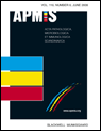Citation:
Ginsburg I. The role of bacteriolysis in the pathophysiology of inflammation, infection and post-infectious sequelae. APMIS. 2002;110 (11) :753-770.

Abstract:
The literature dealing with the biochemical basis of bacteriolysis and its role in inflammation, infection and in post-infectious sequelae is reviewed and discussed. Bacteriolysis is an event that may occur when normal microbial multiplication is altered due to an uncontrolled activation of a series of autolytic cell-wall breaking enzymes (muramidases). While a low-level bacteriolysis sometimes occurs physiologically, due to "mistakes" in cell separation, a pronounced cell wall breakdown may occur following bacteriolysis induced either by beta-lactam antibiotics or by a large variety of bacteriolysis-inducing cationic peptides. These include spermine, spermidine, bactericidal peptides defensins, bacterial permeability increasing peptides from neutrophils, cationic proteins from eosinophils, lysozyme, myeloperoxidase, lactoferrin, the highly cationic proteinases elastase and cathepsins, PLA2, and certain synthetic polyamino acids. The cationic agents probably function by deregulating lipoteichoic acid (LTA) in Gram-positive bacteria and phospholipids in Gram-negative bacteria, the presumed regulators of the autolytic enzyme systems (muramidases). When bacteriolysis occurs in vivo, cell-wall- and -membrane-associated lipopolysaccharide (LPS (endotoxin)), lipoteichoic acid (LTA) and peptidoglycan (PPG), are released. These highly phlogistic agents can act on macrophages, either individually or in synergy, to induce the generation and release of reactive oxygen and nitrogen species, cytotoxic cytokines, hydrolases, proteinases, and also to activate the coagulation and complement cascades. All these agents and processes are involved in the pathophysiology of septic shock and multiple organ failure resulting from severe microbial infections. Bacteriolysis induced in in vitro models, either by polycations or by beta-lactams, could be effectively inhibited by sulfated polysaccharides, by D-amino acids as well as by certain anti-bacteriolytic antibiotics. However, within phagocytic cells in inflammatory sites, bacteriolysis tends to be strongly inhibited presumably due to the inactivation by oxidants and proteinases of the bacterial muramidases. This might results in a long persistence of non-biodegradable cell-wall components causing granulomatous inflammation. However, persistence of microbial cell walls in vivo may also boost innate immunity against infections and against tumor-cell proliferation. Therapeutic strategies to cope with the deleterious effects of bacteriolysis in vivo include combinations of autolysin inhibitors with combinations of certain anti-inflammatory agents. These might inhibit the synergistic tissue- and- organ-damaging "cross talks" which lead to septic shock and to additional post-infectious sequelae.Publication Global ID: http://www.ncbi.nlm.nih.gov/pubmed/12588416

